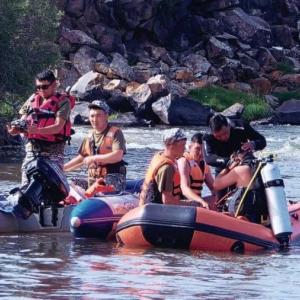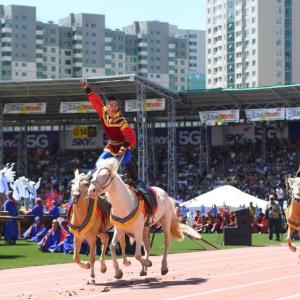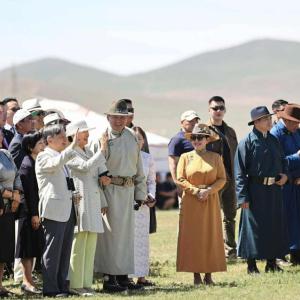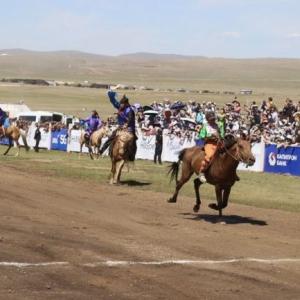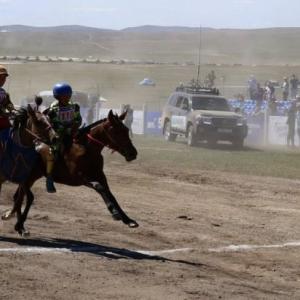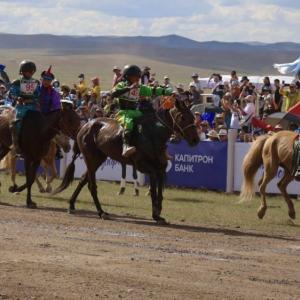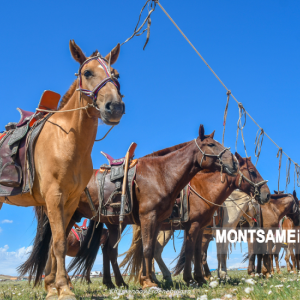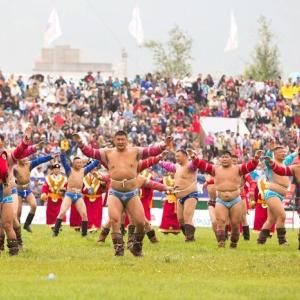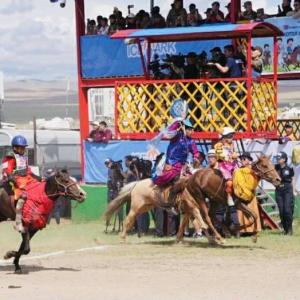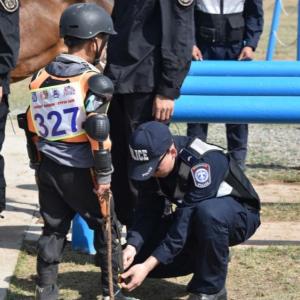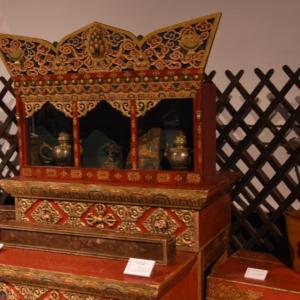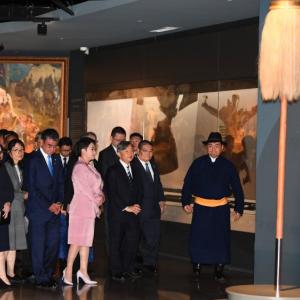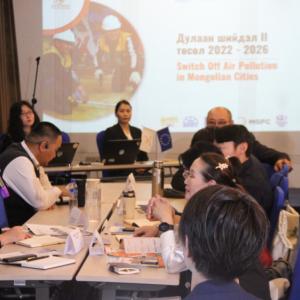Relocated beavers from Germany and Russia restore river habitat
The Mongol Messenger
Ulaanbaatar /MONTSAME/ Specialists warn that even though Mongolia holds average position in the world by its per capita water consumption and hygienic standards of drinking water, its capital city Ulaanbaatar may face drinking water scarcity. Willows along the river bank are decreasing, causing ecological imbalance and river flow is altering since woods around the pond of Tuul River were disorderly cut down many years ago and impacts of human and livestock on the river valley increased.
A reporting team of the MONTSAME national news agency visited the Beaver Introduction Project Unit in Gachuurt Village in Bayanzurkh district, Ulaanbaatar, where beavers are introduced to restore the headwaters of the Tuul River, the main drinking water source of the capital city.
Beaver, one of the largest rodents, is classified as very rare species with a limited distribution in the Red List of Mongolia. There are about 300 Mongolian beavers in Bulgan River, located in Khovd aimag’s Bulgan soum.
The so-called ‘Nature’s engineer’, the beaver, impressively ensures ecological balance of its habitat. Specifically, by building dams and lodges, beavers create wetland and improve the humidity and water levels of that area. Furthermore, beavers promote biodiversity by establishing riparian habitat at the interface between land and river, and maintaining it. Researchers view that although relocation and breeding of a beaver requires a long time and continuous effort, it can gradually bring benefits at low cost.

“Tuul River being disrupted in some areas indicates groundwater losses of those areas. Groundwater declination causes the absorption of surface water to the ground. Beaver creates groundwater resources. Since the project commencement, we have relocated 40 beavers, including 10 this year in the Khan Khentii Strictly Protected Area. This experience shows that we have a full opportunity to raise beavers in Mongolia. Introduction of 80-100 beavers will provide its benefits" said M.Enkhbat, Head of the Beaver Introduction Project Unit.
Under the project, 14 beaver families from the German state of Bavaria and 15 from Russia's Kirov region were brought in 2012 to breed at the unit. In the same year, 8 pairs or 16 beavers were relocated in the Zaany gol (Elephant’s River) which drains into the east of Terelj River, and since then, regular monitoring and researches have been conducted with the administration and rangers of the Khan Khentii Strictly Protected Area.
They monitor the beavers tracking teeth marks left by beavers as the species have night life.

The basic units of beaver social organization are families consisting of an adult male and adult female and their one to two-year-old kits. Two years old or older beavers establish a new family. Adult beaver’s weight is 16-22 kilograms, body length is 74-86 centimeters and tail length is 25-30 centimeters.
Beavers have very stiff movement on the land, yet it can swim in the water, therefore, always live close to water or in an area as far as 5-6 meters from the water. Their fore-paws play the role of hands as those are shorter than the back-paws, which are used as swimming paddle.
Beaver breeders rear the species in separate rooms by families and usually feed them with washed carrots, apples, and rice as the rodents like sweet foods. Therefore, beavers are warm-hearted animals, highlighted Mr. M.Enkhbat.

"We are growing a small number of carrots as an experiment. One beaver eats two kilograms of carrot per day, thus, it is getting harder to feed our beavers with carrots bought from stores. We also think of planting aspens for feeding purpose apart from carrots" he added. Wild beavers eat woody plants including willow, aspen and poplar as well as aquatic plants such as least water lily, lotus and bulrush.
The project unit operates on a land of seven hectares with beaver house, dormitory for the staff, administration building and academic, ecological and cognitive hall for organizing trainings.
When we arrived there, over ten children from Khudulmur camp have been staying at the center for a month, helping with the unit’s activities. The children talked about their new knowledge about beavers and their activity of cleaning up the litter around Tuul River during leisure time.
"I saw a beaver here for the first time. From my observation, it is a very busy and cute animal. Upon arriving here, I realized the importance of water and felt a sense of saving it. In our leisure time, we are cleaning up the litter around Tuul River. We have cleaned 20 bags of litter. I would like to call on people to not litter’ said M.Gerelt, one of the camper children.

"My work begins at 6AM. I do the required works, from electrician to beaver farmer. It has been for 4 years since I started working here. Beaver farming is not that difficult. I feed the beavers, clean their house and change the water. These are first things I do in the mornings and then other works" said one of the staff.
Head of the project unit M.Enkhbat expressed his aspiration to expand the green area and make the breeding center a tourism area, raising the number of beavers.
A reporting team of the MONTSAME national news agency visited the Beaver Introduction Project Unit in Gachuurt Village in Bayanzurkh district, Ulaanbaatar, where beavers are introduced to restore the headwaters of the Tuul River, the main drinking water source of the capital city.
Beaver, one of the largest rodents, is classified as very rare species with a limited distribution in the Red List of Mongolia. There are about 300 Mongolian beavers in Bulgan River, located in Khovd aimag’s Bulgan soum.
The so-called ‘Nature’s engineer’, the beaver, impressively ensures ecological balance of its habitat. Specifically, by building dams and lodges, beavers create wetland and improve the humidity and water levels of that area. Furthermore, beavers promote biodiversity by establishing riparian habitat at the interface between land and river, and maintaining it. Researchers view that although relocation and breeding of a beaver requires a long time and continuous effort, it can gradually bring benefits at low cost.

“Tuul River being disrupted in some areas indicates groundwater losses of those areas. Groundwater declination causes the absorption of surface water to the ground. Beaver creates groundwater resources. Since the project commencement, we have relocated 40 beavers, including 10 this year in the Khan Khentii Strictly Protected Area. This experience shows that we have a full opportunity to raise beavers in Mongolia. Introduction of 80-100 beavers will provide its benefits" said M.Enkhbat, Head of the Beaver Introduction Project Unit.
Under the project, 14 beaver families from the German state of Bavaria and 15 from Russia's Kirov region were brought in 2012 to breed at the unit. In the same year, 8 pairs or 16 beavers were relocated in the Zaany gol (Elephant’s River) which drains into the east of Terelj River, and since then, regular monitoring and researches have been conducted with the administration and rangers of the Khan Khentii Strictly Protected Area.
They monitor the beavers tracking teeth marks left by beavers as the species have night life.

The basic units of beaver social organization are families consisting of an adult male and adult female and their one to two-year-old kits. Two years old or older beavers establish a new family. Adult beaver’s weight is 16-22 kilograms, body length is 74-86 centimeters and tail length is 25-30 centimeters.
Beavers have very stiff movement on the land, yet it can swim in the water, therefore, always live close to water or in an area as far as 5-6 meters from the water. Their fore-paws play the role of hands as those are shorter than the back-paws, which are used as swimming paddle.
Beaver breeders rear the species in separate rooms by families and usually feed them with washed carrots, apples, and rice as the rodents like sweet foods. Therefore, beavers are warm-hearted animals, highlighted Mr. M.Enkhbat.

"We are growing a small number of carrots as an experiment. One beaver eats two kilograms of carrot per day, thus, it is getting harder to feed our beavers with carrots bought from stores. We also think of planting aspens for feeding purpose apart from carrots" he added. Wild beavers eat woody plants including willow, aspen and poplar as well as aquatic plants such as least water lily, lotus and bulrush.
The project unit operates on a land of seven hectares with beaver house, dormitory for the staff, administration building and academic, ecological and cognitive hall for organizing trainings.
When we arrived there, over ten children from Khudulmur camp have been staying at the center for a month, helping with the unit’s activities. The children talked about their new knowledge about beavers and their activity of cleaning up the litter around Tuul River during leisure time.
"I saw a beaver here for the first time. From my observation, it is a very busy and cute animal. Upon arriving here, I realized the importance of water and felt a sense of saving it. In our leisure time, we are cleaning up the litter around Tuul River. We have cleaned 20 bags of litter. I would like to call on people to not litter’ said M.Gerelt, one of the camper children.

"My work begins at 6AM. I do the required works, from electrician to beaver farmer. It has been for 4 years since I started working here. Beaver farming is not that difficult. I feed the beavers, clean their house and change the water. These are first things I do in the mornings and then other works" said one of the staff.
Head of the project unit M.Enkhbat expressed his aspiration to expand the green area and make the breeding center a tourism area, raising the number of beavers.

 Ulaanbaatar
Ulaanbaatar


